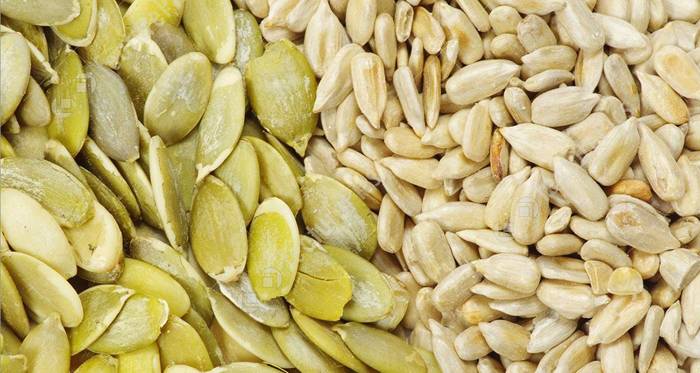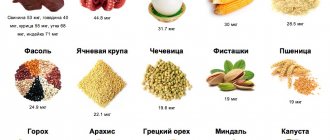Phosphorus (phosphorus) is one of the most common chemical elements on our planet. Phosphorus makes up 0.08 - 0.09% of the mass of the Earth's crust.
Phosphorus plays an important biological role and serves as a building material for many cells of living organisms. In the plant world, it is found in all plants. The highest concentration is observed in fruits and seeds of plants.
In the animal world, phosphorus is part of proteins and many vital organic compounds, including enzymes, nucleic acids, and so on. Phosphorus is found in the tissues and organs of living organisms, but the largest amount is found in bone tissue and tooth enamel.
The average human body contains from 500 to 750 grams of phosphorus, with 90% (calcium phosphate) concentrated in bone tissue. In combination with calcium, phosphorus forms mineral structures that provide strength to bone tissue and tooth enamel. Phosphorus plays an important role in the formation of muscle tissue and brain tissue, and is included in their composition as a building material.
One of the important functions of phosphorus is its participation in energy processes occurring in the human body.
In the tissues of a living organism and food products, phosphorus is contained in the form of phosphoric acid and organic compounds of phosphoric acid (phosphates).
Participation of phosphorus in biological processes of the body
Phosphorus is not only included in living cells in the form of a building material, it also takes part in many vital biological processes occurring in the human body:
- Cell division. Phosphorus is involved in the processes of division of living cells and their growth. It is part of nucleic acids, as well as the structure of cell membranes in the form of phospholipids and phosphoproteins.
- Energy synthesis. Phosphorus takes part in the formation and transport of adenosine triphosphate (ATP) molecules, which store energy in our body.
- Metabolism. Phosphorus takes part in the metabolism and production of carbohydrates and proteins.
- CNS. Phosphorus is involved in biological processes that ensure the transmission of electrical impulses along nerve fibers and brain tissue.
- Balance of phosphorus and calcium. Phosphorus and calcium interact closely in the human body and participate in the formation of the same biological structures. In the human body, with the help of parathyroid hormones, a certain balance is maintained between the content of phosphorus and calcium in tissues and organs. This balance is 2 to 1, two parts calcium to one part phosphorus.
- Other functions. Phosphorus interacts with many enzymes and activates the work of vitamin D and B vitamins.
Nuts
85% of the daily requirement for a chemical element is satisfied by 100 g of raw cashews or Brazil nuts. Almonds, pistachios and peanuts contain less of this trace element, but their composition includes other beneficial substances. It is better to eat nuts raw, although roasting improves the taste. Due to the large amount of fat and phytic acid, you can eat no more than 75 g of these products per day.
- How to make your nose smaller with makeup - visually. What you need to reduce your nose with makeup, photos and videos
- How to properly cook chicken in the oven
- TV antenna for a summer residence
Phosphorus in food
The norm of phosphorus per day is 800 mg, the maximum allowable amount of consumption is 1600 mg.
The bioavailability (ability to be absorbed by the body) of phosphorus supplied with food is no more than 70%. Only fish phosphorus is almost completely absorbed in the intestines.
Phosphorus is found in products:
- milk, dairy products (cheeses)
- meat, offal (beef liver), poultry, eggs
- fish, sturgeon caviar
- bread, oatmeal and buckwheat
- walnuts, seeds
- vegetables, greens (pumpkin, parsley, cabbage, spinach, garlic, carrots).
Lean pork

The body absorbs lean meat products very well. Pork is second only to lamb in this property. The sirloin contains the most chemical element per 100 g - up to 32% of the daily requirement. The best ways to cook pork are to use a double boiler or bake it with the addition of vegetables and herbs. Of these, Brussels sprouts, broccoli and kohlrabi, parsley or basil are rich in phosphorus.
Horseradish and garlic contain large amounts of this substance.
Lack of phosphorus in the human body
Causes of phosphorus deficiency:
- phosphorus metabolism disorders
- unsatisfactory amount of macronutrient intake into the body (low protein intake)
- excessive levels of magnesium, calcium, barium, aluminum compounds in the body
- excessive consumption of synthetic drinks (carbonated drinks, etc.)
- long-term chronic illnesses
- poisoning, drug addiction, alcoholism
- pathologies of the thyroid gland, parathyroid glands
- kidney disease
- feeding an infant with artificial formula
Symptoms of phosphorus deficiency:
- general weakness, loss of appetite, exhaustion
- muscle and bone pain
- Resistance to infections and colds decreases;
- liver protein synthesis decreases
- dystrophic changes in the myocardium, hemorrhagic rashes on the mucous membranes and skin appear
- in some cases – mental disorders
- rickets, periodontal disease
When there is more phosphorus than calcium in the body, the human body will use the calcium that is stored in the bones.
Sunflower and pumpkin seeds

The amount of macronutrients in plant crops depends on oil content - crude fat content. The higher the indicator, the higher the value of the seeds as a source of macronutrients. Sunflower seed contains up to 1230 mg per 100 g of product.
The recommended serving per day is 25–30 g. Due to the high calorie content, consuming more than the norm is harmful.
Pumpkin seeds have higher nutritional value compared to sunflower seeds. They can be eaten fried or raw, which is healthier. The disadvantage of this source of macronutrients is that about 80% of the substance is in the form of poorly absorbed phytic acid. To eliminate this problem, it is better to soak the seeds and germinate them.
Excess phosphorus in the human body
Phosphorus and phosphates are non-toxic. The lethal dose for humans is considered to be 60 mg of phosphorus. A number of phosphorus compounds (phosphine) are highly toxic. Poisoning with phosphorus compounds provokes dysfunction of the kidneys and liver, cardiovascular system, digestive tract, as well as other systems and organs.
Causes of excess phosphorus:
- excessive phosphorus intake (excess protein in foods)
- consumption of large quantities of canned products, lemonades
- long-term interaction with organophosphorus compounds
- phosphorus metabolism disorders
Symptoms of excess phosphorus:
- deposition of poorly soluble phosphates in tissues
- damage to the digestive tract and liver
- bone decalcification (osteoporosis)
- hemorrhages and bleeding
- leukopenia, anemia
Food sources of phosphorus. What foods can you get phosphorus from?
To increase the level of phosphorus in the body, it is necessary to consume both animal and plant foods. The main sources of phosphorus are fish and seafood. The component can also be obtained from cottage cheese, cheese and milk. Legumes and cereals are also rich in phosphorus. A large percentage of phosphorus is found in garlic, spinach, carrots, pumpkin and cabbage. Vitamin-rich berries and some fruits. Experts recommend increasing the consumption of beef liver and chicken eggs to maintain normal phosphorus levels.
Harm from phosphates used in the food industry
In the food industry, phosphates are used in products for the following purposes:
- As an acidulant in carbonated drinks
- Phosphates retain water in food, increasing its weight and volume, preventing the formation of broth-fat edema, and preventing drying out during storage. Mainly used in fish, poultry and meat products (boiled, boiled-smoked sausages, sausages)
- Phosphates are added to condensed milk to help prevent the product from crystallizing.
- They are added to dry bulk products, preventing caking and the formation of lumps in the powder. It is used in dry cream, milk powder, powders containing dry cocoa.
- Added to processed cheeses, providing their consistency
- Used for temperature processing of milk and dairy products
- When making ice cream and other products from dry mixes, phosphates increase the rate of their dissolution during production.
- Used to increase the shelf life of butter and margarine
The following symbols can be found on the labels:
- E 340 - potassium phosphates
- E 338 - orthophosphoric acid (or simply phosphoric)
- E 343 - magnesium phosphates
- E 341 - calcium phosphates
- E 342 - ammonium phosphates
Consequences of the harmful effects of phosphates:
- Excessive intake of phosphates into the human body disrupts the balance in tissues between phosphorus and calcium, which leads to disruption of the structure of bone tissue and disruption of metabolic processes in the human body. Excess phosphorus leads to bone diseases in the form of osteoporosis.
- Excess phosphorus leads to an increased risk of cardiovascular diseases and an increased risk of heart attacks. This occurs due to the deposition of calcium on the inner walls of blood vessels, which leads to their blockage. All this occurs due to a disturbance in the calcium-phosphorus balance.
Excess phosphorus
It also happens that too much phosphorus accumulates in the body, which leads to undesirable consequences:
- poor absorption of calcium, which leads to its leaching from the body and, as a result, makes bones and teeth very fragile;
- the formation of salts and stones in the kidneys - the reason for this is precisely the active leaching of calcium through the kidneys;
- diseases of the liver and gastrointestinal tract;
- frequent bleeding.
It becomes clear that both a lack of phosphorus and its excess can have a negative effect on the body. To prevent this from happening, you should carefully plan your diet and make it varied, without focusing on any one type of food.

Interaction of phosphorus with other elements and drugs
Phosphorus in its pure form is a chemically unstable element, so it easily interacts with other substances. In nature and in our body, phosphorus is found mainly in the form of chemical compounds with other substances.
The content of phosphorus and its compounds in our body can be influenced by various external factors and other substances coming from food.
Let's consider substances that can have a significant effect on the phosphorus content in the human body:
- Alcohol can leach phosphorus from bones and reduce overall phosphorus levels in the body.
- Antacids (reduce stomach acid) containing aluminum, calcium or magnesium can bind phosphate in the intestines. When used long-term, these drugs can lead to a decrease in phosphorus levels in the human body (hypophosphatemia).
- Anticonvulsants may lower phosphorus levels and increase levels of alkaline phosphatase, an enzyme that helps remove phosphate from the body.
- Bile acid drugs lower blood cholesterol levels. They may reduce the oral absorption of phosphate from food or supplements. Oral phosphate supplements should be taken at least 1 hour before or 4 hours after these medications.
- Corticosteroids, including increasing urinary phosphorus levels
- Potassium or drugs that are high in potassium can cause too much potassium in the blood (hyperkalemia). Hyperkalemia can cause dangerous heart rhythm problems (arrhythmias). Salt substitutes that also contain high levels of potassium and phosphorus may cause low levels when used in the long term.
- ACE inhibitors (blood pressure medicine). These are drugs called angiotensin-converting enzyme (ACE) used to treat high blood pressure that can lower phosphorus levels.
- Other medications can also reduce phosphorus levels. These drugs include cyclosporine (used to suppress the immune system), cardiac glycosides (digoxin or Lanoxin), heparins (blood thinners), and nonsteroidal anti-inflammatory drugs (such as ibuprofen).
Phosphorus in nature and its industrial extraction.
The phosphorus content in the earth's crust is estimated at 8 10–2% by mass. Phosphorus is the eleventh most abundant element on Earth and is one of the twenty most abundant elements in the solar system. Element No. 15 is found in many types of meteorites (stony and stony-iron) and on the Moon. For example, in iron meteorites the phosphorus content ranges from 0.02–0.94% (wt), and in various samples of lunar soil it is 0.05–0.32% (wt). Despite the fact that geologists classify phosphorus as a trace element (in the rocks of most of the earth's crust its content is only 0.1%), it is a rock-forming element, since some rocks are composed almost entirely of phosphate minerals. In a free state, phosphorus is not found on earth and exists in the lithosphere almost in the highest degree of oxidation, in the form of the orthophosphate ion PO43–. More than two hundred minerals are known that contain phosphorus in significant (more than 1%) quantities. Phosphate deposits are generally classified into three groups: apatite deposits, sedimentary phosphorite deposits, and guano deposits.
Apatity
- a type of phosphorite, they can be of both magmatic and marine (sedimentary) origin. This name was given to a group of minerals about two hundred years ago, and translated from Greek it means “deceptive” (apátán), originally the name of the mineral, which was often confused with aquamarine, amethyst or olivine. Apatite minerals are represented by fluorapatite Ca5(PO4)3F (the most industrially significant), hydroxyapatite Ca5(PO4)3(OH) and chlorapatite Ca5(PO4)3Cl, francolite (a type of carbonatapatite) (Ca,H2O)10(F,OH)2( PO4,CO3)6, wilkeite Ca10(OH)2(PO4,SiO4,SO4)6, pyromorphite Pb10Cl2(PO4,AsO4)6 and many others. The largest deposits of igneous apatite are located in Russia, the countries of South Africa (Palabora alkaline complex), Uganda and Brazil. The world's largest magmatic apatite deposit - the Khibiny massif of nepheline syenites - lies on the Kola Peninsula, near Kirovsk. It was discovered in 1926 by a group of scientists led by academician A.E. Fersman.
Most of the world's phosphorus reserves come from marine sources
(
sedimentary
)
phosphorites
and their weathering products. They are believed to be of oceanic origin. In the coastal regions of the trade wind belt, phosphate deposition has occurred over a long period due to various organic and inorganic processes. The concentration of phosphorites in the deposit increased as a result of the slow accumulation of phosphates from the environment. The largest deposits of sedimentary phosphorites are owned by Morocco (70% of the world's phosphate reserves) and Western Sahara, the USA, China, Tunisia, and Kazakhstan.
Guano (Spanish: guano) is a natural deposit formed by the decomposition of bones and excrement of seabirds (cormorants, gannets and pelicans); guano deposits sometimes reach one hundred million tons. Guano has been known since time immemorial, dating back to 200 BC. The ancient Carthaginians used bird droppings as fertilizer. At the end of the 19th - beginning of the 20th century. The “Bird Islands” of Peru were discovered, so named because of the large number (about 20 million) of seabirds living there. At the time, the Peruvian government made real money by attracting large numbers of tourists to the Bird Islands and by selling huge quantities of guano as fertilizer. In the last forty years, due to the activities of Peruvian fishermen, the populations of guane-producing birds have sharply decreased (by 4 times), so that some of the Peruvian “Bird Islands” are now completely empty. The largest guano deposits are located along the coasts of Africa, South America, California, and the Seychelles. The highly decomposed guano consists predominantly of monetite CaHPO4 and whitlockite b-Ca3(PO4)2.
World production (2002) of phosphates is 135 million tons annually. The world's largest producer of phosphates is the USA (26% of world production). Developments are underway in Florida (Bone Valley Formation), North Carolina, Idaho and Utah. The Kingdom of Morocco (together with Western Sahara) is the second largest producer of phosphate rock (17.3%) and the largest exporter. Phosphorites are mined in three areas: Kuribga, Youssufiya and Ben Guerir. The main deposit (Khouribga) is located 120 km south of Casablanca. The total reserves of phosphorites in Morocco are 64 billion tons, explored 10 billion tons (60% of the world's proven reserves). China is in third place in terms of production (16.7%), Russia is in fourth place (10.5%). The main source of phosphorus raw materials in Russia are apatite-nepheline ores on the Kola Peninsula. Over the more than seventy years since the discovery of the deposit, over 570 million tons of apatite concentrate have been produced. Currently, 10 deposits have been explored within the Khibiny massif, the total reserves of which amount to 3.6 billion tons, and in general on the Kola Peninsula, ore reserves amount to about 20 million tons. Considering that less than one and a half billion tons have been mined over the past period, Russia’s apatite reserves should last for many more years.
Typically, a deposit that produces at least 6,000 tons of phosphate rock per hectare is considered industrial. In open pits, phosphate is extracted using scraper excavators. First, sand and waste rock are removed, and then the phosphate ore is extracted. From quarries to processing plants, ore can be conveyed (over distances of several km) through steel pipes in the form of an aqueous slurry.
In seawater, all inorganic phosphorus is found only in the form of orthophosphate anion. The average phosphorus concentration in seawater is very low and amounts to 0.07 mg P/liter. The phosphorus content is high in the Andaman Islands region (about 12 µmol/l). The total oceanic amount of phosphorus is estimated at 9.8 1010 tons.
Phosphorus is completely absent from the Earth's atmosphere.
Symptoms of phosphorus deficiency and excess
Up to 70% of the nutrient in the blood plasma comes from phospholipids and enzymes, 10% is represented by protein compounds, 5% comes from complex calcium and magnesium complexes, the rest is represented by acidic residues of orthophosphoric acid - orthophosphate anions.
It is customary to determine inorganic compounds of the element in blood plasma. For the study, colorimetric analysis methods involving ammonium molybdate are used. To assess the amount of macronutrients, it is necessary to determine the concentration of calcium, PTH, and vitamin D.
Normal values for persons over 12 years of age are 0.87-1.45 mmol/l. In children from two to 12 years old, there is an increased concentration of the macroelement associated with increased secretion of growth hormone. Normal values for this age group are 1.45-1.78 mmol/l. Let's consider what threatens an imbalance of phosphorus in the blood, for what reasons it can occur.
Mineral deficiency - causes, symptoms, consequences
Hypophosphatemia is rare in humans. A slight deficiency of the element does not lead to serious consequences, but prolonged phosphorus starvation provokes the leaching of the macroelement from the depot.
The following reasons can lead to nutrient deficiency:
- a diet that excludes or limits the intake of protein (vegetarianism, fasting);
- macronutrient metabolism disorders;
- poor nutrition during pregnancy, lactation, growth and puberty;
- excessive intake of antagonist compounds containing magnesium, aluminum and excess calcium from food.
- vitamin D deficiency;
- chronic pathologies of the endocrine system, kidney and liver diseases;
- excluding breastfeeding from the baby’s “menu”;
- withdrawal symptoms, alcohol abuse;
- diabetic ketoacidosis, hyperthyroidism;
- severe forms of burns with a large area of damage;
- intestinal pathologies, taking antacids based on aluminum salts, taking diuretics and laxatives, dysbacteriosis.
Since most of the macronutrient is deposited in bone and nerve tissue, the first signs of deficiency will affect them. When the nutrient concentration decreases to 0.3 mmol/l, a violation of ATP synthesis, decreased blood cell function, muscle weakness, and cramps are observed.
Consequences of phosphorus starvation:
- fatigue, lack of appetite, decreased attention and mental activity, general weakness;
- decreased immune defense of the body, immunodeficiency, development of autoimmune diseases;
- osteomyelitis, osteoporosis, rickets;
- fatty liver atrophy;
- dystrophy of the heart muscles;
- hemorrhagic pinpoint hemorrhages of various locations (internal organs, mucous membranes);
- convulsions.
Sometimes all you need to do to correct a nutrient deficiency is adjust your diet. To prevent serious pathologies, based on tests, doctors prescribe phosphorus preparations.
Excess phosphorus - possible causes, signs of hyperphosphatemia
To avoid hyperphosphatemia, it is important to maintain the correct balance of nutrients and calcium in the diet, avoid “protein overfeeding,” and eat less foods containing phosphates. Try to avoid products containing acidifiers, color fixatives, stabilizers, marked with code E338-E343. These food additives can be found in smoked meats, soda, dairy products, condensed milk, and canned food.
Also, work in hazardous industries, dysfunction of the endocrine glands, poisoning with heavy metal salts, benzene and phenol derivatives can lead to the accumulation of phosphorus compounds.
With hyperphosphatemia, the following changes are observed:
- leaching (decalcification) of calcium from the skeleton and teeth;
- formation of stones in tissues, vessels, organs;
- nephropathy (in children);
- anemia, tendency to bleeding, hemorrhage;
- pathologies of the liver, kidneys, gastrointestinal tract;
- the risk of heart attack and stroke increases.
A sudden increase in the concentration of phosphorus in the blood can be a symptom of cancer. As a result of the destruction of bone tissue by cancer cells, the released macronutrient enters the blood. Calcium levels also increase.
The importance of phosphorus during pregnancy and childhood
Since phosphorus is a structural element, its importance for the formation of the skeleton in childhood is very great. The baby’s body uses the mineral to build brain cells, so a deficiency of the element is unacceptable. And considering how often babies urinate, nursing mothers should follow the correct menu to replenish nutrients in the baby’s body.
To activate absorption processes, doctors recommend maintaining a balanced diet from all food groups, as well as additionally enriching it with synthetic vitamin D. Taking it in winter is especially important, when synthesis is impossible due to a lack of sunlight. Otherwise, the lack of calcitriol, calcium and phosphorus will affect the development of the skeleton, and the child is at risk of developing rickets.
During pregnancy and lactation, a woman must ensure that she receives more phosphorus, which she needs to protect herself from decalcification. The construction of the skeleton and meninges of the fetus will require a considerable amount of macronutrients. The intake of a sufficient amount of phosphorus will protect the expectant mother’s body from diseases of the musculoskeletal system and increased stress on the heart.
HOW TO ENSURE CORRECT ABSORPTION OF PHOSPHORUS
If there is an excess of aluminum, magnesium and iron, then phosphorus in the body will become completely ineffective, even if its amount is within normal limits. At the same time, excess phosphorus leads to loss of calcium and poor absorption of magnesium, which is fraught with arrhythmia, migraines, and back pain. How to regulate the process of assimilation of all important elements in the body without harming each other?
Doctors recommend, first of all, adjusting your own diet. For example, over the age of 40, a person’s table should prioritize vegetables and herbs, dairy products, rather than meat . This correction will facilitate the work of the kidneys, and they will be able to actively remove excess phosphorus from the body. It would be a good idea to consider a few more points:
- Canned foods to which phosphates are added can lead to excess phosphorus in the body, so there is no need to get carried away with such nutrition.
- Phosphorus works in the right mode in the presence of calcium and vitamin D, but there should be twice as much calcium as phosphorus - dairy products should be on the menu almost constantly, since they are the main suppliers of calcium to the body.
- The need for phosphorus increases significantly with physical activity and lack of protein, excessive consumption of sugar, and long-term use of certain hormonal medications.
- Vitamins A, D, F, as well as potassium, iron, magnesium and calcium in balanced quantities will help the absorption of phosphorus. Therefore, it is important to periodically take a course of multivitamin complexes, but only with the permission of a doctor.
- It is best to replenish phosphorus deficiency in the body with food, but in especially severe cases, drug therapy may be necessary - Riboxin, phosphocoline, phytin and other medications will be prescribed.
Phosphorus plays a vital role in the body, just like other microelements. A deficiency or excess of it can lead to irreversible pathological processes, so it is important to ensure that phosphorus enters the body in normal quantities. A specialist will help with this, but independently increasing the amount of foods rich in phosphorus consumed or taking some vitamin complexes will lead to extremely undesirable consequences.











